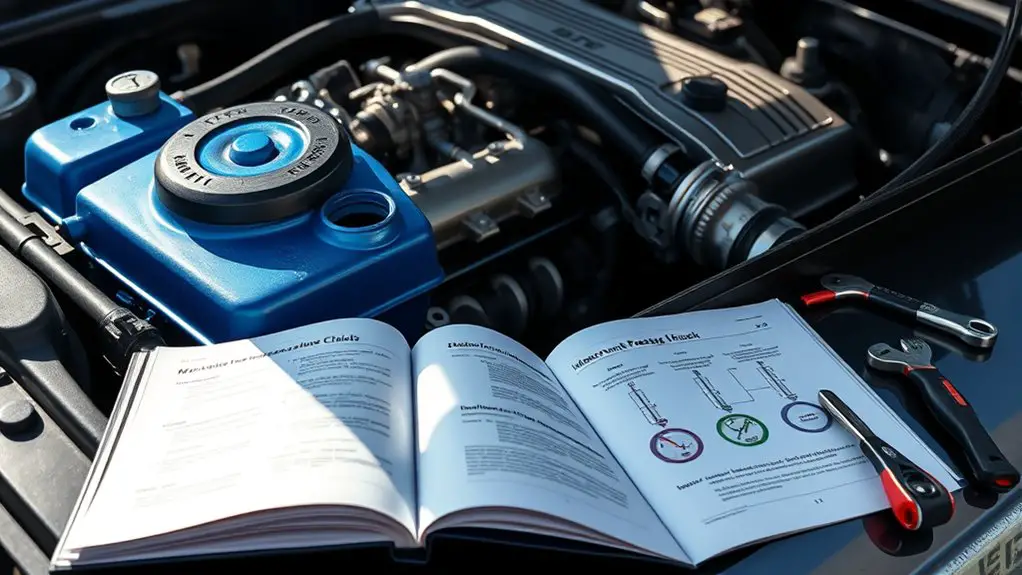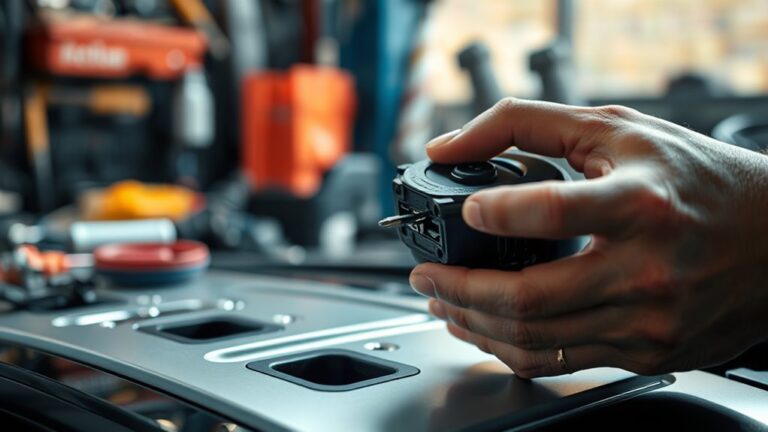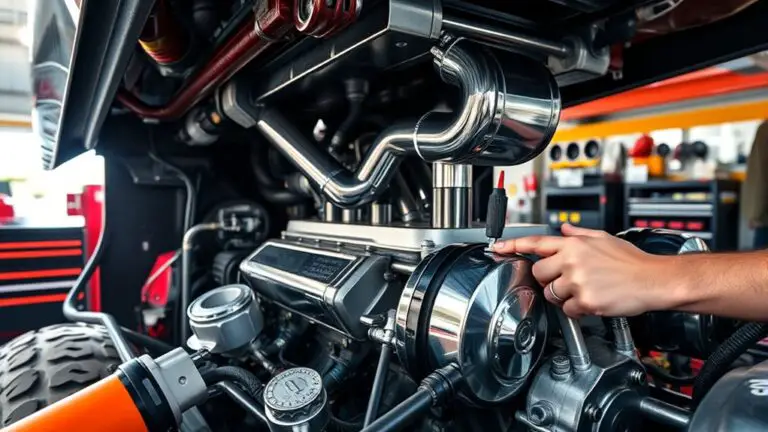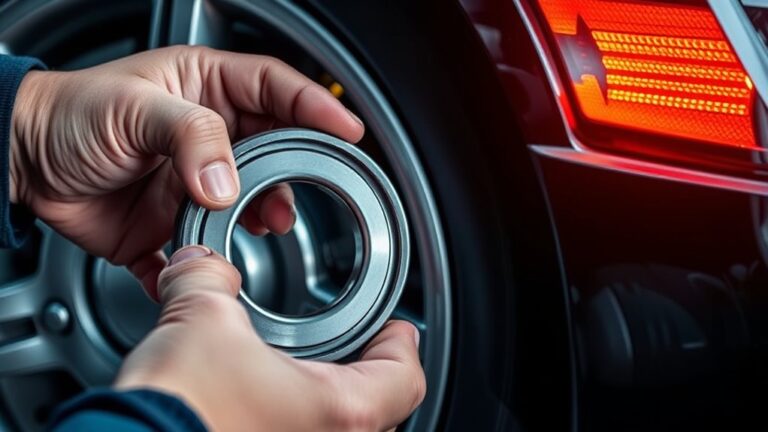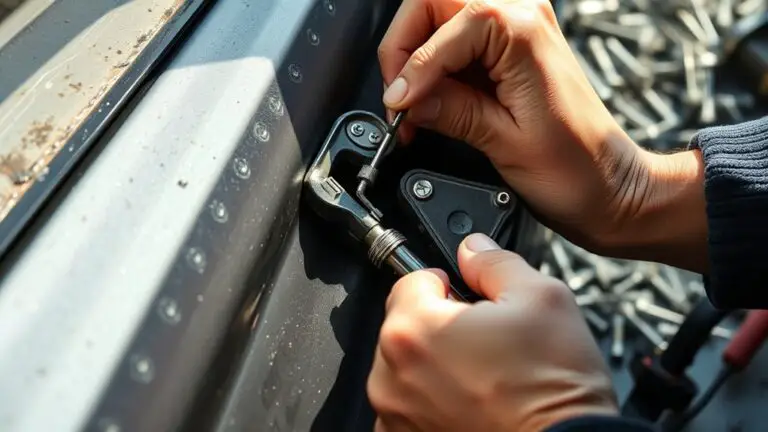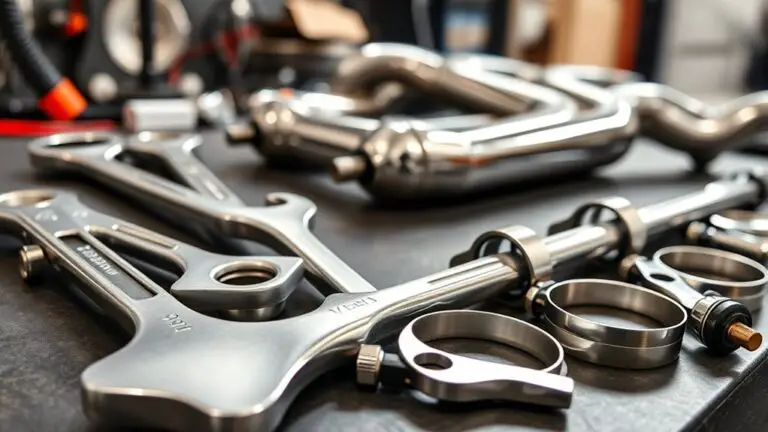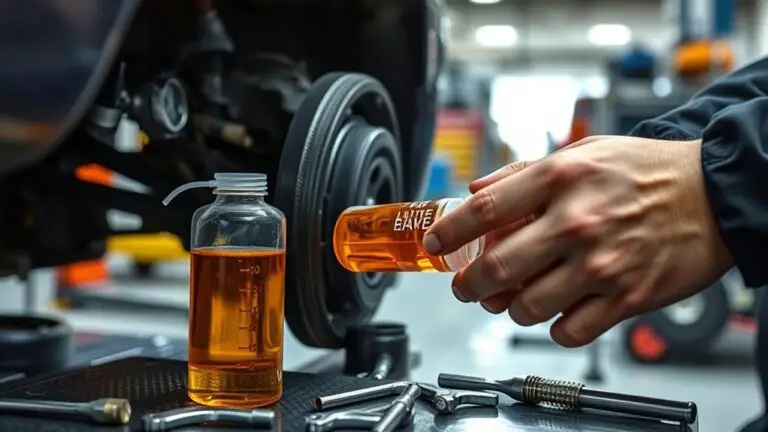How Climate Affects Low Coolant Pressure and Maintenance Tips
Extreme climates shift coolant pressure by changing expansion, viscosity, and heat rejection. In heat, expect higher head pressure, quicker cycling, and potential cap or hose stress—check seals, monitor temperature and pressure curves, and verify correct fill and mix. In cold, coolant thickens, flow drops, and pressure may drop; inspect for leaks, test cold-start flow, and confirm freeze protection. Regularly log readings, tighten or replace worn hoses, and bleed air as needed. More tips await as conditions vary.
Understanding Coolant Systems and Pressure Basics
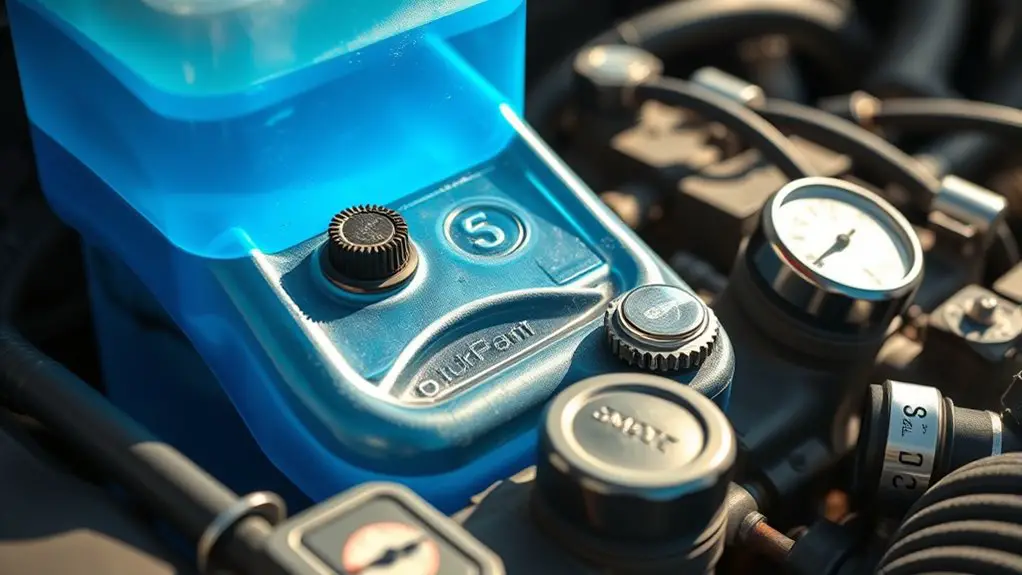
Coolant systems are closed loops that circulate fluid to transfer heat from the engine to the radiator. You’ll trace the path: reservoir, pump, passages, thermostat, radiator, and return. This layout defines how coolant composition shapes performance, compatibility, and longevity. You select mixtures for boiling and freezing points, corrosion resistance, and lubricity, balancing additives with base fluid to meet engine demands. Maintain consistent flow to prevent hot spots; flow rate affects heat transfer efficiency and stall risk. Pressure regulation is essential: the system relies on a sealed environment to raise boiling point and guarantee uninterrupted circulation. You monitor pressure via cap ratings, radiator hoses, and the thermostat, recognizing that deviations signal leaks, component wear, or improper fill. A disciplined approach includes verifying proper fill level when cold, checking for air locks, and inspecting hoses for swelling or tensional loss. You finish with documentation of coolant composition and pressure regulation to guide future maintenance decisions.
Impact of High Summer Temperatures on Coolant Pressure
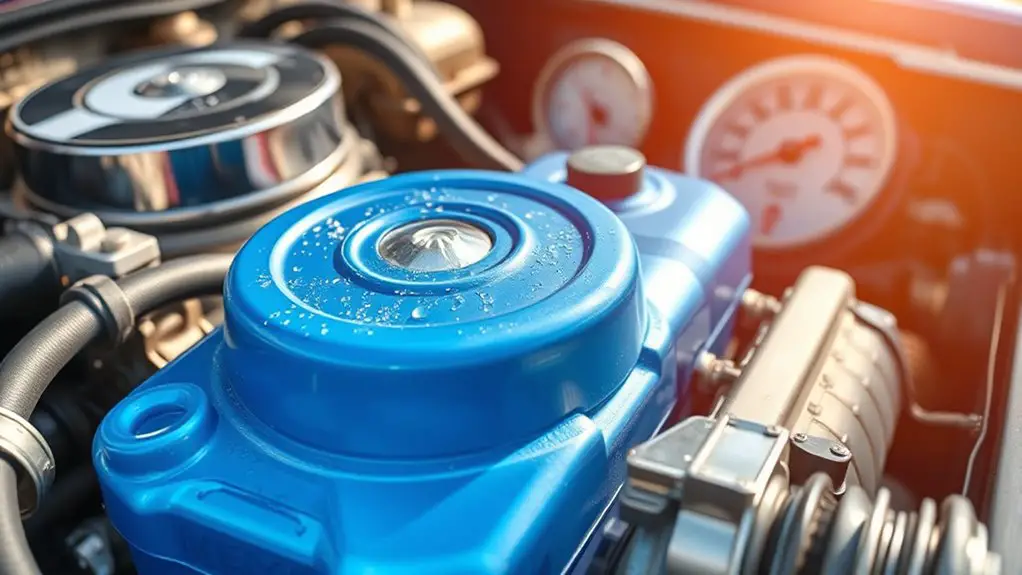
High summer temperatures increase coolant system demand, raising coolant temperature and pressure more quickly than at milder times. This heightens the risk of pressure rise, potential cap or hose failure, and accelerated cooling system strain. You’ll assess sensor readings and operating limits to determine if the system remains within safe, designed parameters.
High Temp Impact
As ambient temperatures rise, coolant pressure tends to increase due to higher system temperatures driving expansion in the cooling circuit. In high-heat conditions, you’ll see amplified thermal expansion, which shifts the pressure baseline and can trigger fluctuations if the system isn’t perfectly sealed or vented. Staying ahead means precise monitoring and measured responses.
- Verify radiator cap and pressure relief settings are within specification and inspect for partial blockages.
- Track coolant temperature and pressure changes, noting any spikes beyond normal oscillation ranges.
- Calibrate expansion tank levels to maintain consistent head pressure during peak hours.
This approach minimizes pressure fluctuations and preserves coolant flow characteristics. Maintain awareness of ambient heat contribution, verify that hoses remain compliant, and document readings to confirm predictable behavior under sustained high temps.
Pressure Rise Risks
Summer heat exacerbates coolant pressure rise by accelerating fluid expansion and increasing system head pressure. In high temperatures, you’ll observe rapid pressure fluctuations as the reservoir volume struggles to accommodate expansion. The result is heightened relay of pressure to safe-guard devices, which may trigger relief valves or fan controls prematurely. You should monitor both ambient and coolant temperatures to distinguish normal cycling from abnormal surges. Understand that overheating risks aren’t limited to a single component: hoses, clamps, and connections may reveal early signs of strain under elevated pressure. Maintain consistent coolant concentration and verify pump performance to prevent cavitation, which compounds rising pressure. Document trends and compare seasonal data to baseline, enabling proactive maintenance rather than reactive fixes. Freedom here means disciplined vigilance, not neglect.
Cooling System Strain
During peak heat, the cooling system experiences greater load as coolant expands more rapidly and radiators, hoses, and pumps work harder to maintain target temperatures. In this strain, pressure fluctuations become more pronounced, elevating the risk of coolant leaks and potential engine overheating. You’ll want to monitor flow, cap integrity, and reservoir levels as temperatures climb.
- Assess pressure readings at steady idle to identify abnormal spikes that indicate strained paths.
- Inspect hoses and clamps for swelling, bulges, or seepage that presage coolant leaks.
- Verify radiator fin cleanliness and cap seal to prevent pressure loss and overheating escalation.
Cold Weather Challenges: Freezing, Thickening, and Pressure Changes
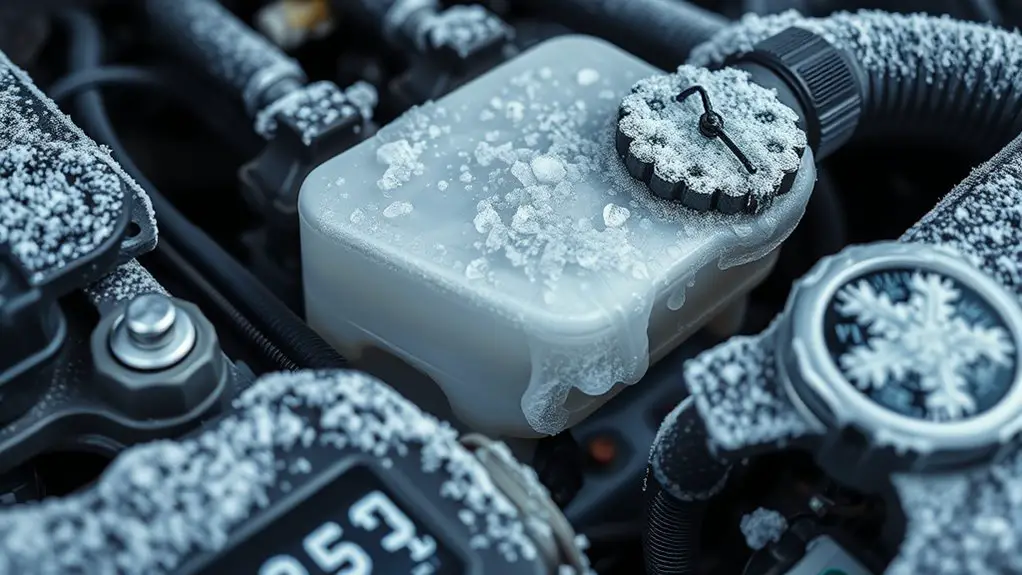
In cold conditions, you’ll encounter freezing hazards at varying temperatures, which can impact coolant flow if freezing points are reached. As coolant thickens, its viscosity increases, reducing pump efficiency and altering pressure distribution across the system. Expect pressure shifts to become more pronounced in low-temperature environments due to reduced coolant mobility and potential membrane or seal responses.
Freezing Hazards Across Temps
When temperatures drop, freezing hazards emerge across the cooling system, causing coolant to thicken, viscosity to increase, and pressure dynamics to shift. You’ll want to monitor how freezing temperatures interact with your mixture and system seals, preventing blockages and improper flow. Below are actionable steps to manage risk:
- Inspect for leaks and weak joints before seasonal lows, ensuring containment paths remain intact.
- Verify coolant formulations and additives align with climate, using coolant additives to optimize freeze protection and corrosion resistance.
- Test pressure integrity and flow rates at representative cold-start conditions, confirming pump and thermostat behavior under cold stress.
These checks help maintain predictable circulation, minimize ice formation in passages, and safeguard the engine’s thermal balance under chilly conditions.
Coolant Thickening Impacts
As temperatures drop, coolant thickening becomes a primary concern alongside freezing hazards, altering viscosity and flow dynamics within the cooling loop. You observe how increased viscosity reduces pump efficiency and slows heat transfer, requiring calibrated flow targets and careful system checks. Thickening elevates pressure differentials across hoses and radiator cores, demanding tighter restraint on valve positions and fan engagement strategies. You should monitor coolant viscosity to anticipate reduced circulation, particularly at low engine speeds and in cold-starts. Thermal expansion behaviors also shift with temperature, influencing reservoir levels and cap seating. Ascertain concentration, additive integrity, and glycol content remain within specification to sustain predictable performance. Document deviations, verify corresponding pressure readings, and execute corrective maintenance before operating under extreme cold.
Pressure Shifts in Cold
Cold conditions cause notable pressure shifts in the cooling loop, driven by freezing risks, coolant thickening, and reduced flow at low engine speeds.
You’ll observe three principal effects:
- cold temperature effects increasing system resistance as coolant viscosity changes, hindering pump efficiency and elevating apparent pressures.
- viscosity changes reduce flow rate at idle and cold starts, raising localized pressure pockets and stressing hoses and seals.
- rapid temperature swings amplify transient spikes, requiring monitoring to avoid pump cavitation and gasket leaks.
To mitigate, verify proper antifreeze concentration, guarantee heater flow paths remain clear, and schedule warm-up checks before long drives. Maintainers should log pressure trends across ambient temps to anticipate performance dips and preserve system integrity.
Altitude and Humidity Effects on Cooling System Performance
Altitude and humidity directly impact cooling system performance by altering heat transfer and coolant dynamics. You’ll notice altitude changes reduce air density, which diminishes convective cooling carried by the radiator fan and ambient airflow. This shifts the heat transfer balance, demanding slightly higher coolant temperatures before boiling or cavitation risks arise. Humidity effects, while subtler, influence radiator efficiency through moisture-laden air altering heat rejection and corrosion potential within the system. At altitude, you should expect a modest rise in operating temperatures under sustained load, necessitating careful monitoring of coolant concentration and flow rates. Keep the pressurized reservoir within specification, as pressure deviations compound temperature shifts. In high humidity conditions, corrosion inhibitors and alloy compatibility become more critical, so verify coolant longevity and replenishment intervals accordingly. Your approach should be data-driven: record ambient conditions, compare with baseline performance, and adjust cooling system servicing to maintain stable thermal margins.
Common Signs of Low Coolant Pressure to Watch For
Low coolant pressure often manifests through a distinct set of symptoms that point to insufficient fluid in the cooling loop. You’ll notice signs that merit immediate attention before overheating or damage occurs.
1) coolant leaks and damp spots around hoses, clamps, and the radiator, sometimes with a steady drip or mist on hot days
2) warning lights on the dashboard illuminate or flash, signaling low fluid or abnormal temperature readings
3) sudden temperature spikes, reduced heater performance, or a rise in engine operating temperature, even while idling
These indicators aren’t random; they reflect a pressurized system losing fluid and efficiency. Track any coolant loss and correlate it with vehicle behavior to isolate the likely source. If you observe leaks or warning lights, prioritize a thorough inspection of hoses, clamps, reservoir, and radiator cap. Do not rely on guesswork; address leaks promptly and verify that the cooling loop holds pressure after replacement. Maintaining proper coolant levels protects your engine and sustains performance under varied climates.
Diagnostic Checks for Summer and Winter Conditions
Summer and winter climates impose distinct demands on the cooling system, so start with a structured diagnostic that accounts for ambient temperature, driving patterns, and coolant condition. You’ll perform a baseline inspection, noting coolant color, level, and any signs of contamination. Next, verify pressure gauges readings at idle and under load, and compare them to service-spec values for the vehicle. When ambient temps rise, check for elevated pressure and ascertain the cap seals correctly; in cold conditions, observe for sluggish pressure rise or failure to reach target. Drive patterns matter: short trips can mask slow leaks, long highway runs reveal steady trends. Inspect hoses, clamps, and the radiator for coolant leaks, paying attention to pressurized joints. Confirm reservoir function by monitoring level during cooling cycles. If readings diverge from expectations, document deviations, then plan targeted checks on the water pump and thermostat while avoiding unnecessary disassembly.
Maintenance Practices to Prevent Pressure Drops
Maintenance practices to prevent pressure drops demand a disciplined, stepwise approach that targets the cooling system’s primary failure points. You implement a formal routine that emphasizes coolant maintenance and accurate pressure monitoring to sustain system integrity under varying climates.
- Inspect hoses and connections for cracks or leaks, tightening or replacing as needed.
- Verify coolant concentration and fill level, adjusting with manufacturer-approved fluids to maintain boiling and freezing thresholds.
- Monitor pressure trends with calibrated gauges, logging readings and triggering maintenance if deviations exceed spec.
This methodical protocol reduces evaporative losses, prevents air ingress, and preserves pump efficiency. You align maintenance intervals with operating conditions, ensuring that coolant maintenance and pressure monitoring remain ongoing habits rather than one-off tasks. You’ll document procedures, track response times to anomalies, and refine the routine to suit your environment. The result is reliable cooling performance, minimized pressure drops, and restored freedom to operate without excessive constraint or risk.
Seasonal Coolant and Sealing Care Tips
As temperatures shift with the seasons, adapt your coolant and sealing strategy to preserve pressure stability and prevent leaks. You’ll perform a seasonal inspection focused on stability, visibility, and material integrity, then apply deliberate sealing techniques to minimize thermal stress. Begin with fluid level checks, ensuring consistency between ports and hoses, and verify pressure readings across ambient shifts. Replace aging clamps and gaskets that show cracking or deformation; select seals rated for your operating range. Use graduated torque during reassembly to avoid deformation. Document ambient conditions and results to guide future cycles. The goal is predictable coolant flow and sustained pressure without overdesign. Below is a quick-reference layout to reinforce methodical practice.
| Seasonal Insight | Action Step |
|---|---|
| Temperature swings | Schedule seasonal inspection |
| Seal durability | Implement sealing techniques |
| Fluid consistency | Confirm levels and pressure |
When to Seek Professional Help and Refill Guidelines
If you notice persistent pressure loss despite recent sealing and coolant top-ups, or any sudden temperature spikes accompanied by audible hissing or bubbling, it’s time to bring in professional expertise and perform a thorough system diagnostic. Accurate assessment helps determine whether the issue stems from a cracked hose, a faulty cap, or a degraded radiator, guiding precise coolant replacement and repair strategy. Prioritize a professional assessment to avoid incomplete fixes or recurring leaks.
- Schedule a diagnostic check with a qualified technician to evaluate pressure integrity, cooling circuits, and sealing surfaces.
- Follow the technician’s coolant replacement plan, ensuring correct mix, concentrations, and bleed procedures to restore proper flow.
- Implement recommended preventive steps, including cap replacement, hose inspection, and thermostat verification, to sustain ideal pressure and climate-related performance.
This approach emphasizes methodical verification, reduces risk, and preserves driving freedom through reliable cooling system health.
Frequently Asked Questions
How Does Driving Style Affect Coolant Pressure Over Time?
Under your driving style, engine strain rises with aggressive acceleration, higher RPMs, and rapid throttle changes, causing coolant pumps to work harder and pressure to fluctuate more under load over time. Sustained high strain accelerates wear on hoses and the radiator, potentially raising baseline pressure if the cooling cycle becomes less efficient. Moderate driving habits, smooth shifts, and steady speeds reduce thermal cycling, preserving steady pressure and extending cooling-system integrity.
Can a Clogged Radiator Cap Cause Sudden Pressure Drops?
A clogged radiator cap can trigger sudden pressure drops. You’ll see erratic readings, bubbling, and loss of coolant as the system can’t maintain a steady seal. In radiator maintenance, replace a gummed cap promptly to prevent overheating. Expect pressure fluctuations if the cap doesn’t vent properly, especially under heat and load. You’ll want to follow a precise, methodical check routine, verify seals, and test system pressure to safeguard engine integrity for smooth, free operation.
Do Different Antifreeze Types Influence Pressure Stability?
Antifreeze types influence pressure stability, but not by creating drastic swings if formulations meet spec. You’ll want to match antifreeze properties to your system’s design, since poorer compatibility can lead to pressure fluctuations under thermal load. When selecting, consider coolant mix, boiling and freezing points, and corrosion inhibitors. You monitor pressure behavior as you test, noting any deviations. If findings show stability, you’ve aligned the formulation; if not, recheck concentration and purity to minimize fluctuations.
Is Coolant Pressure Affected by Engine Timing Belts?
Timing belt wear can indirectly affect coolant pressure stability only if the belt drives water pump timing in a interference engine; otherwise, it doesn’t directly alter pressure. You should monitor coolant pressure if the water pump is driven by the timing belt and replace the belt per spec to avoid pump failure. Schedule timing belt replacement before peak wear to prevent cascading coolant issues. Maintain precise cooling system checks after timing belt service.
Can Remote Temperature Sensors Mislead Pressure Readings?
Remote temperature sensors can mislead pressure readings. You’ll want to verify sensor accuracy directly, as improper placement or aging components skew results. Temperature fluctuations affect coolant pressure signals, so expect slight inconsistencies across cycles. Rely on standardized tests, cross-check with a calibrated gauge, and document drift over time. If readings deviate beyond spec, recalibrate or replace sensors. Maintain a methodical checklist to guarantee reliable data and preserve system performance under variable climate conditions.

